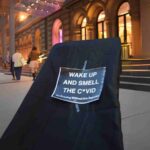The fashion industry has become synonymous with quick production and consumption, often at the expense of the environment. This phenomenon, known as fast fashion, emphasises quick turnaround times and low costs, leading to significant ecological consequences. Though people want to follow fashion trends, people also want to diminish their environmental footprint.
A Retro Tale: Redefining Vintage Fashion
With increasing awareness of the environmental cost of fashion, many people are going towards vintage or thrifting. This can even be done online with vintage from aretrotale, for example, which specialises in high-end second-hand fashion accessories. Because they are not mass-produced, each handbag or piece of jewellery tells its own story, reflecting the elegance and quality of a bygone era. With a meticulous approach to authenticity, these kinds of boutiques ensure that every item is carefully examined by a team of experts. Their dedication to verification reassures buyers that what they are purchasing is genuine—a key concern in the second-hand luxury market.
Sustainability Through Vintage Fashion
One of the most striking aspects of vintage and second-hand shopping is its contribution to sustainable fashion. The industry has long been criticised for its environmental impact, with mass production generating excessive waste and pollution. By offering pre-owned designer pieces, vintage shopping is part of the solution, promoting a way of shopping that reduces waste and harm towards the environment while maintaining a high standard of quality and style. Instead of adding to the cycle of overconsumption, the boutique allows fashion enthusiasts to invest in pieces that stand the test of time.
The Value of Craftsmanship
Luxury brands have built their reputations on craftsmanship and exclusivity. However, the current fashion industry often prioritises volume over artistry, making vintage finds even more valuable. A Retro Tale’s selection, for example, includes sought-after names such as Hermès, Chanel, and Cartier, ensuring that customers have access to iconic pieces that are no longer in production. This makes each purchase not just a fashion choice, but a connection to design history.
A Smart Investment
Beyond sustainability and authenticity, there is also a financial appeal. Luxury goods are often priced out of reach for many shoppers, but the second-hand market makes them more accessible. Buying vintage allows customers to own well-crafted items at a lower cost without compromising on quality. Additionally, many designer pieces retain or even increase in value over time, making them a smart investment.
A Growing Market
There are over 3,800 stores in the United Kingdom specialised in selling secondhand goods. In 2021, sales in these stores saw a tremendous growth of 27.2% in value, a clear indication of increased consumer interest in the secondhand market. While fast fashion remains dominant, there is a growing demand for more thoughtful ways to shop. For people who want to make lifestyle changes and reduce their ecological footprint, shopping second-hand is an accessible and inexpensive way to do so.
A Future Built on Sustainability
As the fashion industry reckons with its environmental and ethical responsibilities, there are now platforms which provide a path forward. By giving luxury fashion a second life, they challenge the idea that style has an expiration date. For those looking to make a statement with their wardrobe—one that values quality, history, and sustainability—vintage is more than just an option. It’s a commitment to a different way of thinking about fashion.




















